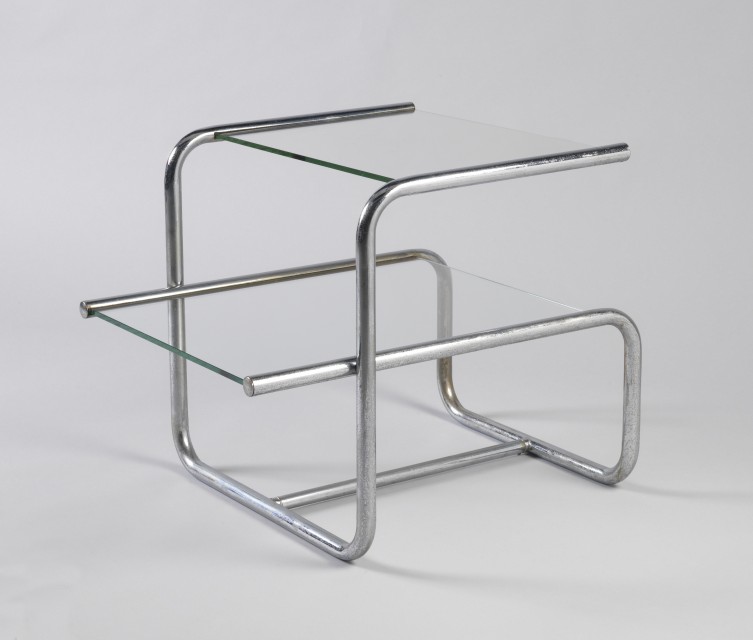Cooper-Hewitt is fortunate to have the archive of renowned American modernist designer, Donald Deskey, as well as a number of Deskey objects, in its collection. A versatile practitioner in many design disciplines—exhibition and interior design, furniture, lighting, and packaging—Deskey was also a pioneer in the field of industrial design.
Deskey studied in Paris from 1920 to 1922, returning in 1925 to attend the Paris Exposition internationale des arts décoratifs et industriels modernes and visit the Bauhaus in Germany. Both the luxurious Art Deco interiors and the stark European modernist designs influenced Deskey’s practice. From 1927 to 1931, Deskey partnered with Phillip Vollmer to form the New York-based firm, Deskey-Vollmer, Inc., specializing in furniture and lighting. Deskey experimented and eventually developed an American modernism that utilized affordable, industrial materials to create distinctive furniture and interiors suited to American tastes and sensibilities molded, in part, by the Great Depression. Deskey called himself an inventor, and was among the first American designers to create a line of chrome-plated metal furniture.
This simple, linear, tubular metal and glass end table was part of the interior of the Richard H. Mandel House in Bedford Hills, New York, designed between 1933 and 1935 by architect Edward Durell Stone for his client—and Deskey associate—Richard H. Mandel. The functional concrete, glass, and steel International Style residence became a collaboration between Stone, Deskey, and Mandel. (Stone and Deskey had previously worked together on Radio City Music Hall, in 1932; Stone was the architect and Deskey designed the interiors.) In contrast to many homeowners of the era who relegated modernist design to kitchens and bathrooms, Mandel wanted pure modernism throughout his house. Deskey defined spaces in the open-plan layout with color and carpets, and used simple tubular metal furniture to achieve a unified interior.
While Deskey created some furniture specifically for the Mandel House, he also incorporated his mass-produced pieces: this undated clipping from the Deskey archive shows this end table design as part of the furnishings in one of the Mandel House rooms.

When Mandel’s residence was completed in 1935, Fortune magazine proclaimed it a “House That Works.”
Today is Donald Deskey’s birthday.
